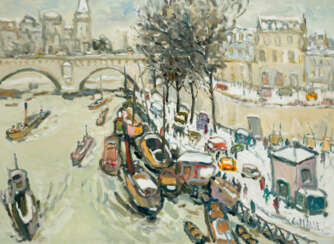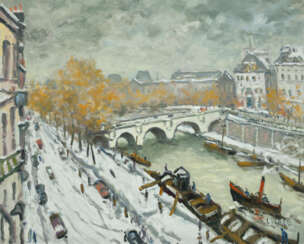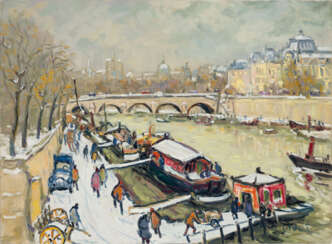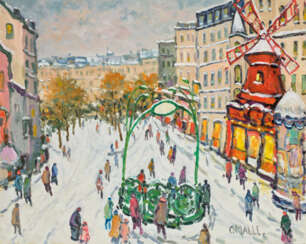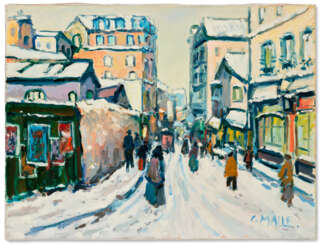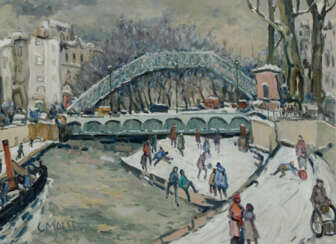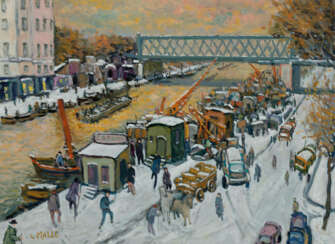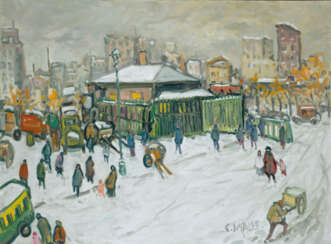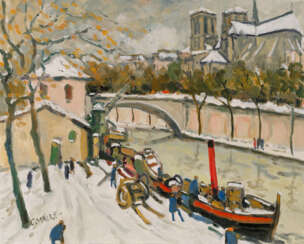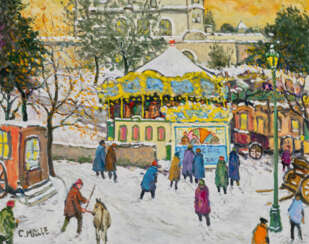charles malle (1935 - 2023)
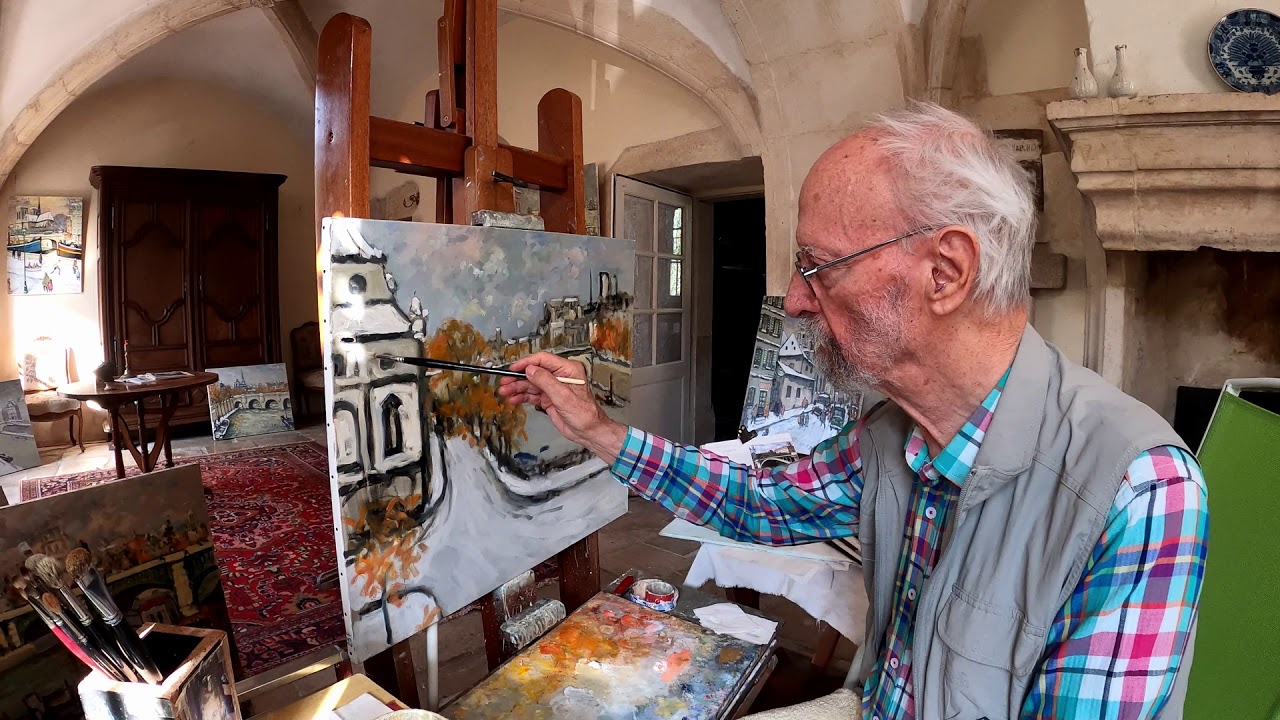
Charles Malle, born Charles Gleize, is a French artist. Mallet's work is varied and includes works of various styles and techniques, from impressionist cityscapes to abstract and minimalist works.
Mallet studied at the École des Beaux-Arts in Paris in the 1950s. Mallet's early work was figurative and representational, painting cityscapes in the Impressionist style. However, he later moved away from this style and became associated with the Support/Surface movement in France, which sought to question the nature of painting and sculpture through abstraction and deconstruction of form.
Mallet's later work from the 1970s onwards is characterised by geometric forms, bold colours and flat surfaces. He often worked in series, exploring variations on a particular theme or concept. He also created sculptures and installations using materials such as metal, wood and fabric.
Mallet's work has been exhibited in galleries and museums around the world, including the Centre Pompidou in Paris, the Museum of Modern Art in New York and the Stedelijk Museum in Amsterdam. He has also been the subject of several retrospectives, including one at the Museum of Modern and Contemporary Art in Nice in 2009.
Mallet continues to work and exhibit his art today, and is considered one of the leading figures of the contemporary French art scene.


Charles Malle, born Charles Gleize, is a French artist. Mallet's work is varied and includes works of various styles and techniques, from impressionist cityscapes to abstract and minimalist works.
Mallet studied at the École des Beaux-Arts in Paris in the 1950s. Mallet's early work was figurative and representational, painting cityscapes in the Impressionist style. However, he later moved away from this style and became associated with the Support/Surface movement in France, which sought to question the nature of painting and sculpture through abstraction and deconstruction of form.
Mallet's later work from the 1970s onwards is characterised by geometric forms, bold colours and flat surfaces. He often worked in series, exploring variations on a particular theme or concept. He also created sculptures and installations using materials such as metal, wood and fabric.
Mallet's work has been exhibited in galleries and museums around the world, including the Centre Pompidou in Paris, the Museum of Modern Art in New York and the Stedelijk Museum in Amsterdam. He has also been the subject of several retrospectives, including one at the Museum of Modern and Contemporary Art in Nice in 2009.
Mallet continues to work and exhibit his art today, and is considered one of the leading figures of the contemporary French art scene.


Charles Malle, born Charles Gleize, is a French artist. Mallet's work is varied and includes works of various styles and techniques, from impressionist cityscapes to abstract and minimalist works.
Mallet studied at the École des Beaux-Arts in Paris in the 1950s. Mallet's early work was figurative and representational, painting cityscapes in the Impressionist style. However, he later moved away from this style and became associated with the Support/Surface movement in France, which sought to question the nature of painting and sculpture through abstraction and deconstruction of form.
Mallet's later work from the 1970s onwards is characterised by geometric forms, bold colours and flat surfaces. He often worked in series, exploring variations on a particular theme or concept. He also created sculptures and installations using materials such as metal, wood and fabric.
Mallet's work has been exhibited in galleries and museums around the world, including the Centre Pompidou in Paris, the Museum of Modern Art in New York and the Stedelijk Museum in Amsterdam. He has also been the subject of several retrospectives, including one at the Museum of Modern and Contemporary Art in Nice in 2009.
Mallet continues to work and exhibit his art today, and is considered one of the leading figures of the contemporary French art scene.


Charles Malle, born Charles Gleize, is a French artist. Mallet's work is varied and includes works of various styles and techniques, from impressionist cityscapes to abstract and minimalist works.
Mallet studied at the École des Beaux-Arts in Paris in the 1950s. Mallet's early work was figurative and representational, painting cityscapes in the Impressionist style. However, he later moved away from this style and became associated with the Support/Surface movement in France, which sought to question the nature of painting and sculpture through abstraction and deconstruction of form.
Mallet's later work from the 1970s onwards is characterised by geometric forms, bold colours and flat surfaces. He often worked in series, exploring variations on a particular theme or concept. He also created sculptures and installations using materials such as metal, wood and fabric.
Mallet's work has been exhibited in galleries and museums around the world, including the Centre Pompidou in Paris, the Museum of Modern Art in New York and the Stedelijk Museum in Amsterdam. He has also been the subject of several retrospectives, including one at the Museum of Modern and Contemporary Art in Nice in 2009.
Mallet continues to work and exhibit his art today, and is considered one of the leading figures of the contemporary French art scene.


Charles Malle, born Charles Gleize, is a French artist. Mallet's work is varied and includes works of various styles and techniques, from impressionist cityscapes to abstract and minimalist works.
Mallet studied at the École des Beaux-Arts in Paris in the 1950s. Mallet's early work was figurative and representational, painting cityscapes in the Impressionist style. However, he later moved away from this style and became associated with the Support/Surface movement in France, which sought to question the nature of painting and sculpture through abstraction and deconstruction of form.
Mallet's later work from the 1970s onwards is characterised by geometric forms, bold colours and flat surfaces. He often worked in series, exploring variations on a particular theme or concept. He also created sculptures and installations using materials such as metal, wood and fabric.
Mallet's work has been exhibited in galleries and museums around the world, including the Centre Pompidou in Paris, the Museum of Modern Art in New York and the Stedelijk Museum in Amsterdam. He has also been the subject of several retrospectives, including one at the Museum of Modern and Contemporary Art in Nice in 2009.
Mallet continues to work and exhibit his art today, and is considered one of the leading figures of the contemporary French art scene.
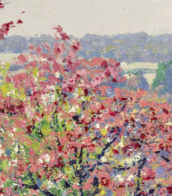

Charles Malle, born Charles Gleize, is a French artist. Mallet's work is varied and includes works of various styles and techniques, from impressionist cityscapes to abstract and minimalist works.
Mallet studied at the École des Beaux-Arts in Paris in the 1950s. Mallet's early work was figurative and representational, painting cityscapes in the Impressionist style. However, he later moved away from this style and became associated with the Support/Surface movement in France, which sought to question the nature of painting and sculpture through abstraction and deconstruction of form.
Mallet's later work from the 1970s onwards is characterised by geometric forms, bold colours and flat surfaces. He often worked in series, exploring variations on a particular theme or concept. He also created sculptures and installations using materials such as metal, wood and fabric.
Mallet's work has been exhibited in galleries and museums around the world, including the Centre Pompidou in Paris, the Museum of Modern Art in New York and the Stedelijk Museum in Amsterdam. He has also been the subject of several retrospectives, including one at the Museum of Modern and Contemporary Art in Nice in 2009.
Mallet continues to work and exhibit his art today, and is considered one of the leading figures of the contemporary French art scene.


Charles Malle, born Charles Gleize, is a French artist. Mallet's work is varied and includes works of various styles and techniques, from impressionist cityscapes to abstract and minimalist works.
Mallet studied at the École des Beaux-Arts in Paris in the 1950s. Mallet's early work was figurative and representational, painting cityscapes in the Impressionist style. However, he later moved away from this style and became associated with the Support/Surface movement in France, which sought to question the nature of painting and sculpture through abstraction and deconstruction of form.
Mallet's later work from the 1970s onwards is characterised by geometric forms, bold colours and flat surfaces. He often worked in series, exploring variations on a particular theme or concept. He also created sculptures and installations using materials such as metal, wood and fabric.
Mallet's work has been exhibited in galleries and museums around the world, including the Centre Pompidou in Paris, the Museum of Modern Art in New York and the Stedelijk Museum in Amsterdam. He has also been the subject of several retrospectives, including one at the Museum of Modern and Contemporary Art in Nice in 2009.
Mallet continues to work and exhibit his art today, and is considered one of the leading figures of the contemporary French art scene.
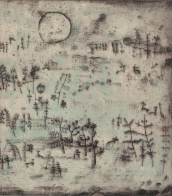

Charles Malle, born Charles Gleize, is a French artist. Mallet's work is varied and includes works of various styles and techniques, from impressionist cityscapes to abstract and minimalist works.
Mallet studied at the École des Beaux-Arts in Paris in the 1950s. Mallet's early work was figurative and representational, painting cityscapes in the Impressionist style. However, he later moved away from this style and became associated with the Support/Surface movement in France, which sought to question the nature of painting and sculpture through abstraction and deconstruction of form.
Mallet's later work from the 1970s onwards is characterised by geometric forms, bold colours and flat surfaces. He often worked in series, exploring variations on a particular theme or concept. He also created sculptures and installations using materials such as metal, wood and fabric.
Mallet's work has been exhibited in galleries and museums around the world, including the Centre Pompidou in Paris, the Museum of Modern Art in New York and the Stedelijk Museum in Amsterdam. He has also been the subject of several retrospectives, including one at the Museum of Modern and Contemporary Art in Nice in 2009.
Mallet continues to work and exhibit his art today, and is considered one of the leading figures of the contemporary French art scene.


Charles Malle, born Charles Gleize, is a French artist. Mallet's work is varied and includes works of various styles and techniques, from impressionist cityscapes to abstract and minimalist works.
Mallet studied at the École des Beaux-Arts in Paris in the 1950s. Mallet's early work was figurative and representational, painting cityscapes in the Impressionist style. However, he later moved away from this style and became associated with the Support/Surface movement in France, which sought to question the nature of painting and sculpture through abstraction and deconstruction of form.
Mallet's later work from the 1970s onwards is characterised by geometric forms, bold colours and flat surfaces. He often worked in series, exploring variations on a particular theme or concept. He also created sculptures and installations using materials such as metal, wood and fabric.
Mallet's work has been exhibited in galleries and museums around the world, including the Centre Pompidou in Paris, the Museum of Modern Art in New York and the Stedelijk Museum in Amsterdam. He has also been the subject of several retrospectives, including one at the Museum of Modern and Contemporary Art in Nice in 2009.
Mallet continues to work and exhibit his art today, and is considered one of the leading figures of the contemporary French art scene.


Charles Malle, born Charles Gleize, is a French artist. Mallet's work is varied and includes works of various styles and techniques, from impressionist cityscapes to abstract and minimalist works.
Mallet studied at the École des Beaux-Arts in Paris in the 1950s. Mallet's early work was figurative and representational, painting cityscapes in the Impressionist style. However, he later moved away from this style and became associated with the Support/Surface movement in France, which sought to question the nature of painting and sculpture through abstraction and deconstruction of form.
Mallet's later work from the 1970s onwards is characterised by geometric forms, bold colours and flat surfaces. He often worked in series, exploring variations on a particular theme or concept. He also created sculptures and installations using materials such as metal, wood and fabric.
Mallet's work has been exhibited in galleries and museums around the world, including the Centre Pompidou in Paris, the Museum of Modern Art in New York and the Stedelijk Museum in Amsterdam. He has also been the subject of several retrospectives, including one at the Museum of Modern and Contemporary Art in Nice in 2009.
Mallet continues to work and exhibit his art today, and is considered one of the leading figures of the contemporary French art scene.


Charles Malle, born Charles Gleize, is a French artist. Mallet's work is varied and includes works of various styles and techniques, from impressionist cityscapes to abstract and minimalist works.
Mallet studied at the École des Beaux-Arts in Paris in the 1950s. Mallet's early work was figurative and representational, painting cityscapes in the Impressionist style. However, he later moved away from this style and became associated with the Support/Surface movement in France, which sought to question the nature of painting and sculpture through abstraction and deconstruction of form.
Mallet's later work from the 1970s onwards is characterised by geometric forms, bold colours and flat surfaces. He often worked in series, exploring variations on a particular theme or concept. He also created sculptures and installations using materials such as metal, wood and fabric.
Mallet's work has been exhibited in galleries and museums around the world, including the Centre Pompidou in Paris, the Museum of Modern Art in New York and the Stedelijk Museum in Amsterdam. He has also been the subject of several retrospectives, including one at the Museum of Modern and Contemporary Art in Nice in 2009.
Mallet continues to work and exhibit his art today, and is considered one of the leading figures of the contemporary French art scene.
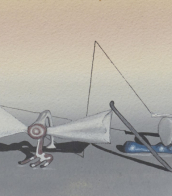

Charles Malle, born Charles Gleize, is a French artist. Mallet's work is varied and includes works of various styles and techniques, from impressionist cityscapes to abstract and minimalist works.
Mallet studied at the École des Beaux-Arts in Paris in the 1950s. Mallet's early work was figurative and representational, painting cityscapes in the Impressionist style. However, he later moved away from this style and became associated with the Support/Surface movement in France, which sought to question the nature of painting and sculpture through abstraction and deconstruction of form.
Mallet's later work from the 1970s onwards is characterised by geometric forms, bold colours and flat surfaces. He often worked in series, exploring variations on a particular theme or concept. He also created sculptures and installations using materials such as metal, wood and fabric.
Mallet's work has been exhibited in galleries and museums around the world, including the Centre Pompidou in Paris, the Museum of Modern Art in New York and the Stedelijk Museum in Amsterdam. He has also been the subject of several retrospectives, including one at the Museum of Modern and Contemporary Art in Nice in 2009.
Mallet continues to work and exhibit his art today, and is considered one of the leading figures of the contemporary French art scene.


Charles Malle, born Charles Gleize, is a French artist. Mallet's work is varied and includes works of various styles and techniques, from impressionist cityscapes to abstract and minimalist works.
Mallet studied at the École des Beaux-Arts in Paris in the 1950s. Mallet's early work was figurative and representational, painting cityscapes in the Impressionist style. However, he later moved away from this style and became associated with the Support/Surface movement in France, which sought to question the nature of painting and sculpture through abstraction and deconstruction of form.
Mallet's later work from the 1970s onwards is characterised by geometric forms, bold colours and flat surfaces. He often worked in series, exploring variations on a particular theme or concept. He also created sculptures and installations using materials such as metal, wood and fabric.
Mallet's work has been exhibited in galleries and museums around the world, including the Centre Pompidou in Paris, the Museum of Modern Art in New York and the Stedelijk Museum in Amsterdam. He has also been the subject of several retrospectives, including one at the Museum of Modern and Contemporary Art in Nice in 2009.
Mallet continues to work and exhibit his art today, and is considered one of the leading figures of the contemporary French art scene.

